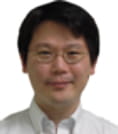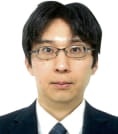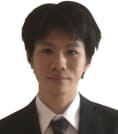- JST Home
- /
- Strategic Basic Research Programs
- /
 PRESTO
PRESTO- /
- project/
- Creation of Life Science Basis by Using Quantum Technology/
- [Quantum Bio] Year Started : 2019
[Quantum Bio] Year Started : 2019
Lewis.M Antill
Spatiotemporal measurement of cryptochromes for animal magnetoreception
Researcher
Lewis.M Antill

PRESTO Researcher
Japan Science and Technology Agency
Outline
This project aims to clarify the obscurities of animal magnetoreception by shedding light on the photochemical process of cryptochrome (the prime candidate protein) and the influence of the magnetic field thereon from the viewpoint of its most fundamental signal formation and propagation. The purpose of this study is to clarify the protein’s reaction processes and structural changes using optogenetics, molecular spectroscopy, and electron spin resonance, even though it is quantum mechanical in nature. This study is a model of quantum biology and applying this broad scope approach is an ambitious challenge.
Takayuki Umakoshi
Label-free super-resolution microscopy to observe biological nano-dynamics
Researcher
Takayuki Umakoshi

Lecturer (Full-time)
Institute for Advanced Co-Creation Studies
Osaka University
Outline
In this research, I utilize a label-free super-resolution microscopy based on nanometrically localized light generated through quantization of free electrons. By drastically improving its abilities, I will achieve label-free imaging with video-rate imaging speed and 10 nm spatial resolution. As if seeing through an ordinary optical microscope, I will observe and record natural behaviors of various biological samples or phenomena at nanoscale, and will give a strong impact to life science.
Takao Ono
Measurement and control of biochemical interfaces by using quantum capacitance
Researcher
Takao Ono

Assistant Professor
The Institute of Scientific and Industrial Research
Osaka University
Outline
I develop a novel method for measuring and controlling interfaces using nanomaterial with quantum properties. With this method, I establish a technology for dealing with various biochemical interfaces with high sensitivity and in real time, and propose a concept of interface as an extremely small reaction field.
Kota Katayama
Structural basis for understanding of spectral tuning and phototransduction mechanisms
Researcher
Kota Katayama

Assistant Professor
Graduate School of Enginnering
Nagoya Institute of Technology
Outline
Humans have two kinds of vision: twilight vision mediated by rhodopsin (Rh) and color vision achieved by three cone pigments, each one of which absorbs either predominantly blue (lmax = 425 nm), green (lmax = 530 nm) or red (lmax = 560 nm) light. A common chromophore molecule, 11-cis-retinal, bound to an opsin protein is used to distinguish different colors in vision, suggesting active control of light absorption by the protein scaffold. The purpose of this research is to close the gap in our understanding of the principles involved in color vision by determining the three dimensional structure of cone pigments and performing functional FTIR analyses.
Ryosuke Saito
A rivived ancient photosynthetic protein: the birth of quantum effects
Researcher
Ryosuke Saito

Assistant professor
Graduate School of Science and Technology for Innovation
Yamaguchi University
Outline
This study investigates when the quantum effect was born by reviving ancient photosynthetic proteins to the present. Specifically, by restoring the photosynthetic proteins contained in the sedimentary rocks by spectroscopic and biochemical methods and confirming the existence of the quantum effects of the photosynthetic proteins, this study Investigates if it can be traced back. By investigating the paleo-environment at the time the quantum effect was born, this study clarifies the relationship between life evolution and the Earth environment.
Mitsuo Shoji
Elucidation of the Specific Chemical Reactions in Biological Many-Body Quantum Systems
Researcher
Mitsuo Shoji

Assistant Professor
Center for Computational Sciences
University of Tsukuba
Outline
There still remain big problems in photosynthetic water oxidation in photosynthesis. One is determination of the oxidation states of Mn atoms in photosystem II. I will assign the Mn atom’s oxidation state by evaluating the magnetic anisotropic interaction, which is unique but most sensitive property in quantum spin system. Second is elucidation of the central reaction mechanisms for the water oxidation. This problem can be efficiently elucidated by adapting my newly developed structure search algorithm. As another application, quantum states of nitrogenase are investigated. The spin state, oxidation state and reaction mechanisms for the nirogen reduction are clarified. I will make drastic progress on both development of novel thoretical algorithms and practical elucidation for unsolved biological many-body quantum systems.
Hideki Tomita
Laser based radioactive isotope selection and analysis for personalized medicine
Researcher
Hideki Tomita

Associate professor
Graduate School of Engineering
Nagoya University
Outline
Laser based radioactive isotope selection and analysis will be developed for personalized medicine. Radioactive isotope analysis by laser spectroscopy will be combine with liquid chromatography for metabolism analysis. In addition, laser assisted selection and nuclear polarization of medical radioactive isotopes will be investigated.
Yuta Fujihashi
Theoretical studies of time-resolved spectroscopy with quantum entangled light: Aplications to biological systems
Researcher
Yuta Fujihashi

Assistant Professor
Graduate School of Engineering
Kyoto University
Outline
In this research, I aim to theoretically propose time-resolved spectroscopy with quantum entangled light. The new spectroscopy with the use of the time-frequency entanglement will achieve both high spectral and high temporal resolution which is not possible by classical laser light, and may elucidate molecular mechanisms of primary charge separation in the photosystem II reaction center.
Naoki Honkura
Substance exchange machinery blazed by nonlinear optical effects.
Researcher
Naoki Honkura

Associate Professor
Faculty of Medicine
Hamamatsu Univerisity School of Medicine
Outline
To understand the substance exchange machinery for keeping homeostasis in our body, I would like to visualize and quantify the oxygen release from red blood cells(RBCs), which are occupied around 70% in total cells constructed our human body, to tissues and organs under different conditions using nonlinear optical effects. The mechanism and location of oxygen release from RBCs in blood vessel could be found out by high spatio-temporal resolution images with multiphoton excitation of fluorescent molecules and third harmonic generation that origin from biological molecules. Finally, I try to reveal and formulate the general rule of substance exchanges via blood vessel with this novel quantitative intravital imaging technique.
Hirofumi Yanagisawa
Development of low-energy electron holography with atomic resolution
Researcher
Hirofumi Yanagisawa

PRESTO Researcher
Japan Science and Technology Agency
Outline
The current selection of electron microscopes are able to reveal the three-dimensional atomic structures of bio-molecules. These microscopes, however, use high energy electrons which damage the molecules during observation, thus making it impossible to observe the atomic structure of a particular single molecule. Low-energy electrons can significantly lower the damage threshold, but it is difficult for these electrons to achieve resolution on an atomic scale. Here, we create a totally new form of electron microscope that is able to achieve atomic resolution using low-energy electrons.
Rekishu Yamazaki
A development of Cavity Optofluidics
Researcher
Rekishu Yamazaki

Associate Professor
College of Liberal Arts
International Christian University
Outline
This project focus on the idea of optomechanics in liquid at room temperature. Development of high-Q phonon and optical resonators in liquid, and creaging a strong couling between these modes can form a unique system, the cavity optofluidics. With the aim of quantum manipulation of the liquid phase, this project try to create a new platform where the quantum electronic technologies can be adpoted for the biological applications. This research aims towards a development of novel trapping techniques for living organisms using light and sound waves, and ultimately a laser cooling of liquids.













